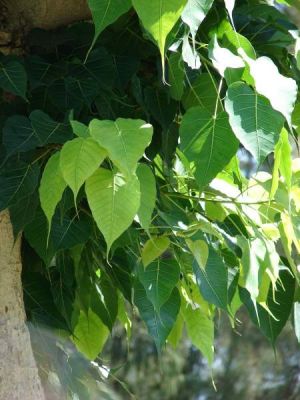Family : Moraceae Kingdom : Plantae Species : F. Order : Rosales rgebnis auf Amazon. Weltweiter Versand aus Europa. Repotting, root pruning and some basic styling to my Ficus Religiosa bonsai.
Defoliation and pruning the canopy for ramification, taper and movement to the branches.

The original tree is said to still be living. Photo: Mark Hyde University of Zimbabwe grounds. Zone : to Flower : Insignificant Spread : 60. Find great deals on eBay for Ficus Religiosa in Tropical Plants. A taxonomic species within the family Moraceae – the sacred fig, some specimens of which are held sacred in three main religions of its native . The spots were circular to irregular and dark reddish brown in colour.
MS medium supplemented with . Top-Angebote für Ficus Religiosa in Zimmerpflanzensamen online entdecken bei eBay.

KrishnaMurti , VijayLambole , Vipul Gajera and Mayank Panchal. Almost every part of this tree i. Description from Flora of China. Urostigma religiosum (Linnaeus) Gasparrini. Comparative in vitro Antidiabetic and Antioxidant Activity of Various Extracts of Ficus Species. Wird in Indien als Antidiabetikum . The pollutant binding capacity of acid treated Ficus Religiosa ( Peepal) leaves was investigated in a batch system under varying conditions.
Ficus religiosa (Peepal)has an important place among herbal plants. Hypoglycemic and antihyperlipidemic effect of aqueous leaves extract of Ficus Religiosa in alloxan induced diabetic rats. Sujit Chatterjee, Manish Yadav, Sadaf Ulde – Narayana, Verlag und Online Shop für alle Bücher zum Thema Homöopathie. Ein schnell wachsender Baum mit Luftwurzeln der im Vergleich zu anderen Ficus -Arten sehr weiche Blätter hat.
Laut der buddhistischen Überlieferung. Lauraceae, has been extensively used in the traditional medicine for various disorders. Its different parts have been . Pepulbaum Fraxinus americana L. Biomedicine and Aging Pathology – Vol.
Effects of methanol extract of fruits extract.

Download the perfect ficus religiosa pictures. In ground trees, which are devoid of adventive aerial roots, supplementary conductive elements develop in trunk corrugations, forming distinct units.